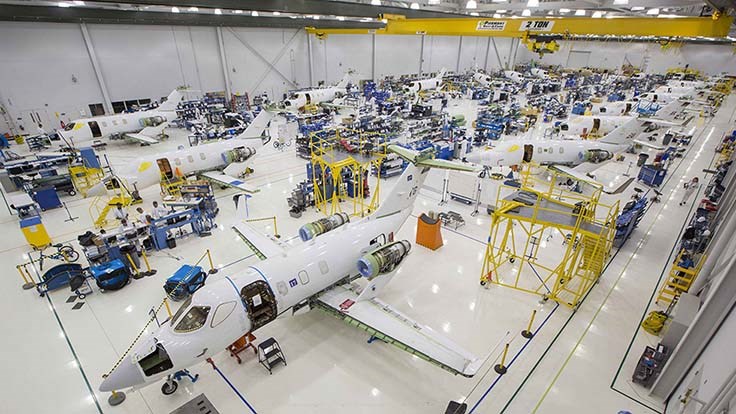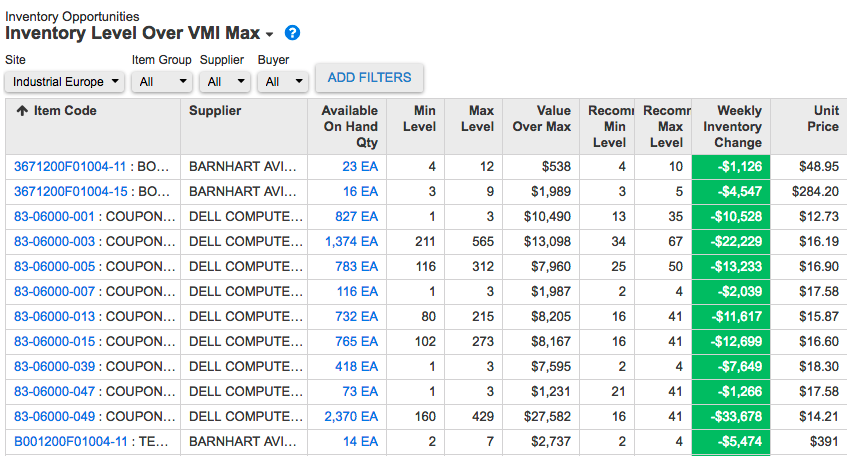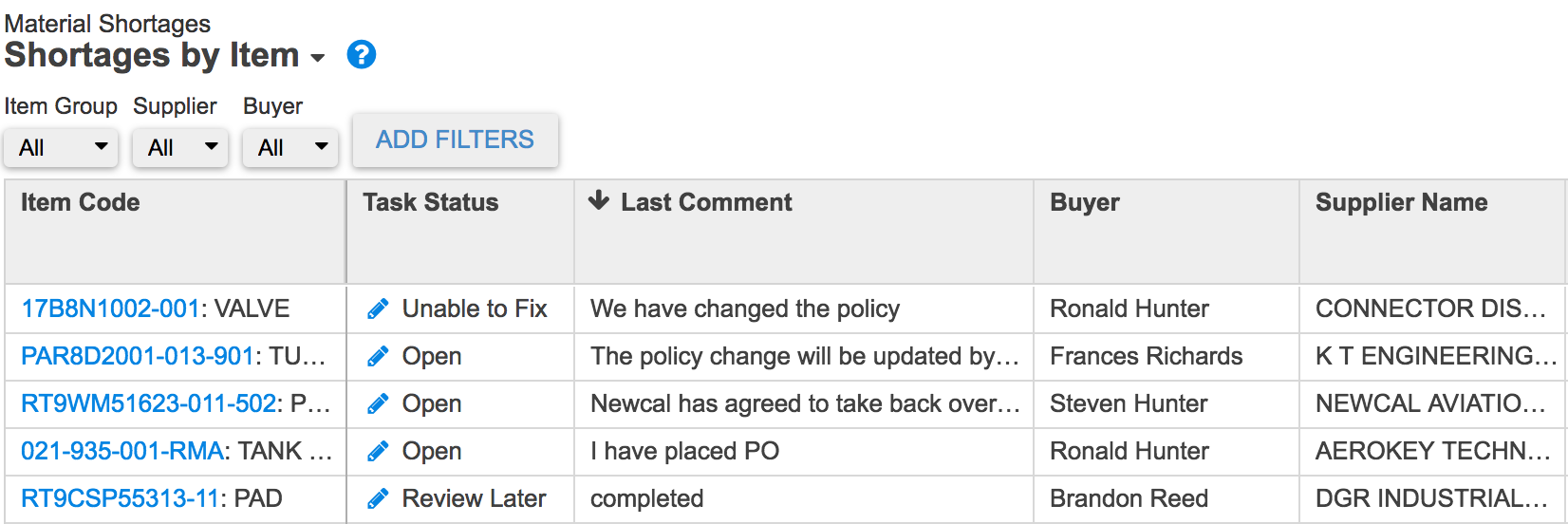 Supply chain managers are constantly hampered by distractions. You get stuck monitoring on-time deliveries, vendor-managed inventory (VMI), and impending (or existing!) shortages. Ever feel frustrated by the challenge of how to deal with material shortages?
Supply chain managers are constantly hampered by distractions. You get stuck monitoring on-time deliveries, vendor-managed inventory (VMI), and impending (or existing!) shortages. Ever feel frustrated by the challenge of how to deal with material shortages?
It seems there’s hardly any time to seek real solutions when you’re so busy applying bandaids. Believe it or not, there are initiatives supply chain managers can implement to reduce shortages, save costs, and smooth out the process.
Here are 5 strategies for remedying your shortage woes:
1. Prioritize Critical Shortages by Supplier and Buyer and Identify the Root Causes
Manufacturers are often responsible for hundreds of thousands (if not millions!) of parts to build complex and technical products. But even small manufacturers find that monitoring materials can pose a logistical nightmare. The key is prioritization.
Addressing shortages by priority lets you identify low-hanging fruit—inventory that represents the most impactful costs contributing to your value chain. But understanding the root source of your shortages is where management can begin to reduce shortages into the future. This also lets your organization be forward-looking so you know how to deal with material shortages that are coming in the future based on current demand, POs, MOQs, and lead time in order to avoid falling short on an order.
2. Optimize Your VMI Thresholds
Countless manufacturers have turned to vendor-managed inventory to take some of the legwork out of monitoring an ever-expanding network of suppliers. VMIs ensure that the right materials arrive when they’re needed based on forecasted supply and demand.
 Unfortunately, supply chain managers can only do so much to make sure their suppliers ship materials at the perfect cadence. Regularly compare current inventory levels with minimum and maximum inventory requirements to help reduce costs associated with both shortages and excess goods.
Unfortunately, supply chain managers can only do so much to make sure their suppliers ship materials at the perfect cadence. Regularly compare current inventory levels with minimum and maximum inventory requirements to help reduce costs associated with both shortages and excess goods.
But how can managers track VMI parameters for hundreds of thousands of materials? And what about when those materials receive new orders or experience transportation delays? Monitor data from your ERP system to find optimal MinMax levels for your organization. Changes to demand, POs, and inventory burn-off all affect your VMI thresholds. It’s important to find a way to not only monitor your VMIs, but provide action items on how to best optimize your system.
3. Unlock your ERP
You’ve invested millions in your ERP system… now what? There is a wealth of knowledge locked up in that system. And today's business culture of mergers and acquisitions often results in a single manufacturer running dozens of ERP systems. But navigating a desktop with multiple ERP windows and Excel spreadsheets open is less than ideal when it comes to making impactful decisions.
Today's data manipulation capabilities, including big data and cloud computing, show how clunky yesterday's Excel-based systems really are. We've all struggled with the limitations of Excel. It's static, and files need to be emailed from desktop to desktop. Management teams can only hope that each version houses the most updated figures.
The solution for this is to keep all your data in a centralized location where everyone can access it. A cloud-based program for all your supply chain data is the easiest way. Or consider keeping your spreadsheets in a central repository, like a Google Drive or Dropbox. Collaborative work efforts across teams and facilities are easier when everything is stored in an accessible, online solution. The functionality, customization, and integration of ERPs are becoming more limited, according to PwC. You need to find a process to absorb, manipulate, and process your data without manual labor.
4. Collaborate With Your Suppliers
 Suppliers are your friends. The relationship between buyer and seller is never more important than the moment you need a PO expedited or VMI parameters optimized. As you try to better understand how to deal with material shortages, ask yourself: are you able to monitor suppliers for real-time KPIs and metrics?
Suppliers are your friends. The relationship between buyer and seller is never more important than the moment you need a PO expedited or VMI parameters optimized. As you try to better understand how to deal with material shortages, ask yourself: are you able to monitor suppliers for real-time KPIs and metrics?
Whether you’re recognizing a champion supplier or finding corrective solutions for an underperforming partner, aggregating data across your company gives a holistic view of how your supply chain performs. With this information, you can set up improvement plans to ensure issues are addressed and controlled. These initiatives will be critical:
- Enable communication of actions, defects, or relevant information with your suppliers
- Allow suppliers to access the current inventory levels and their own performance metrics
- Provide visibility into PPV metrics so you can address variances outside of standards
- Monitor and control early deliveries and VMI that contribute to excess or obsolete inventory
5. Increase Transparency, Accountability, and Ownership Among Your Buyers

Ownership: what every manager seeks in their employees. Ownership of company initiatives, goals, metrics, and successes. But how can you drive ownership and accountability among your ranks?
Consider providing dashboards and metrics aggregated across the entire buying process. Dashboards should have clear insights into trend lines, past performance, and forecasted figures. By implementing comprehensive data visualization, you’re cultivating a culture of transparency. When employees study company figures in the rear view mirror, they understand specific KPI drivers. Plus, a better understanding of forecasted figures will help every team member understand how he or she can drive results.
For buyers, understanding how to overcome material shortages goes beyond knowing how to place a PO. Buyers should see potential changes to demand. They should know of impactful events on the supply chain as they occur, and be able to prepare for road bumps along shipping routes. Assigning tasks to buyers helps reduce the stress associated with these unknowns.
Don't be frustrated by how to deal with material shortages
If you want to reduce shortages, it's important to keep your eye on the big picture. Working toward these initiatives will have a big impact on your supply chain's success. Even if you can execute one action item from any of the above tips each day, you are moving in the right direction.
It’s time to regain control of your shortages and monitor suppliers so that you can exceed the needs of your customers. LeanDNA arms supply chain leaders with the tools necessary to really succeed with these five strategies. From shortage dashboards to supplier portals, LeanDNA’s capabilities drive continuous improvement without exhausting your resources, time, or money. Make the most of the data in your expensive ERP system by finding a SaaS solution that fits the needs and corporate goals of your organization.
